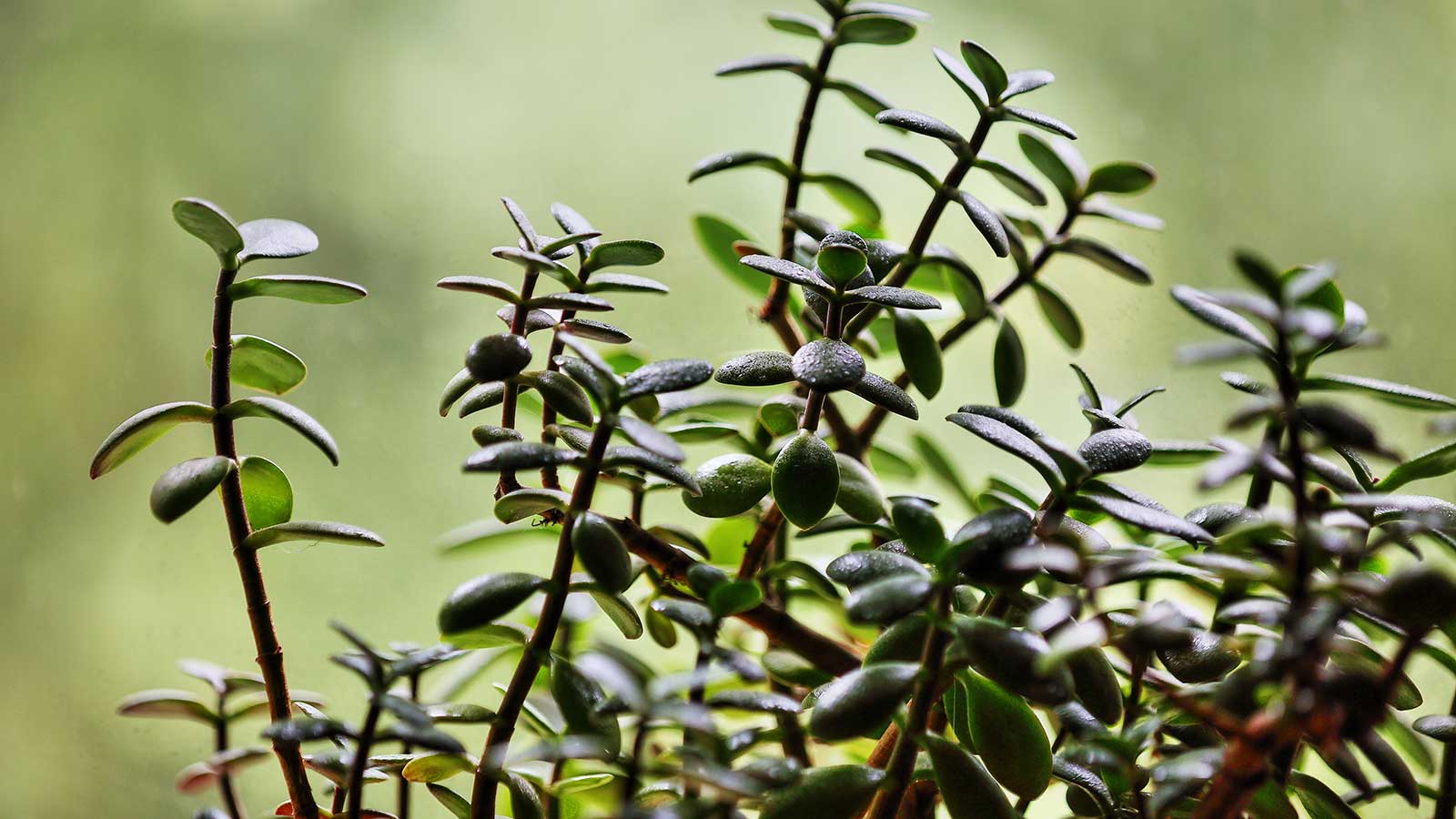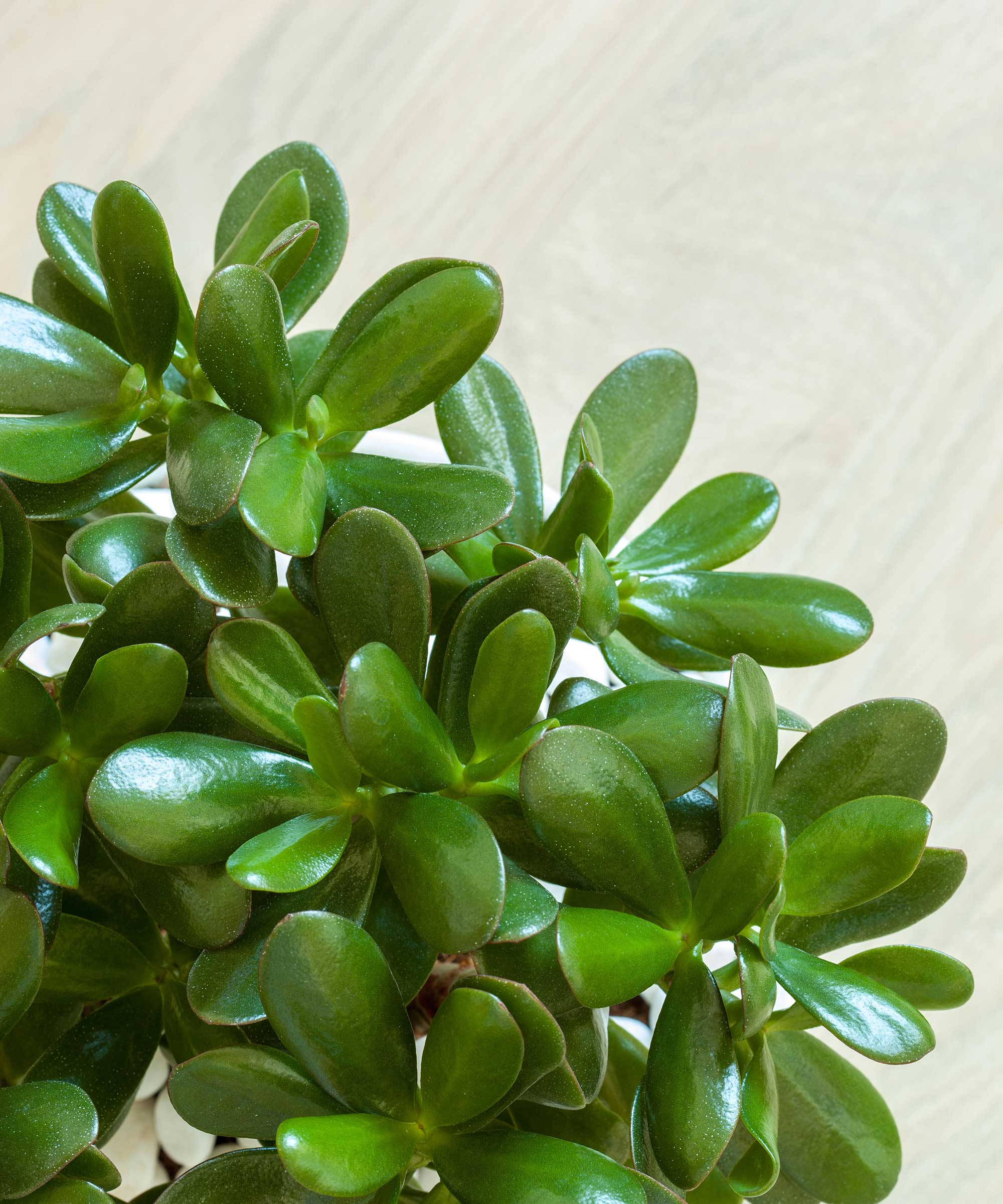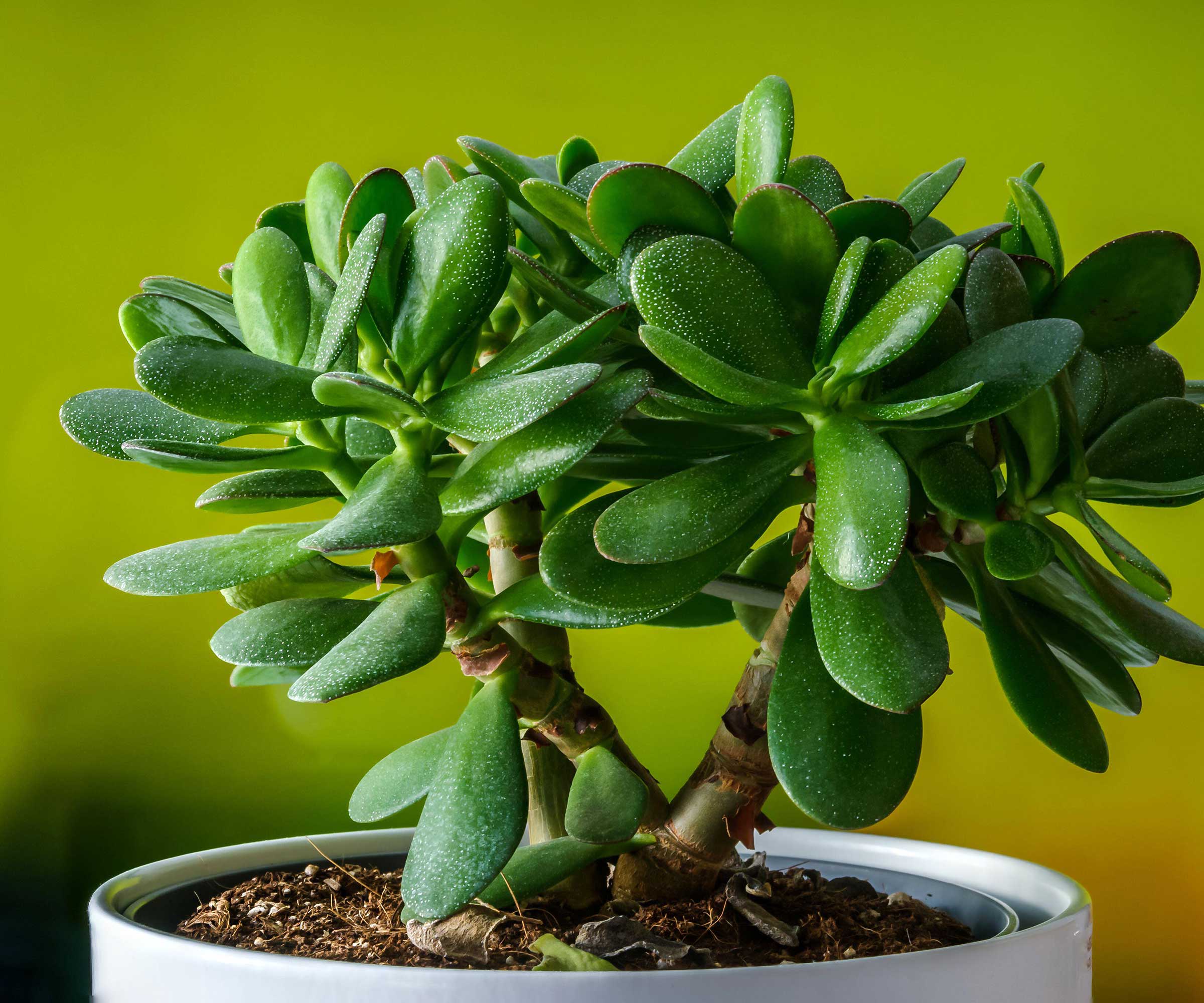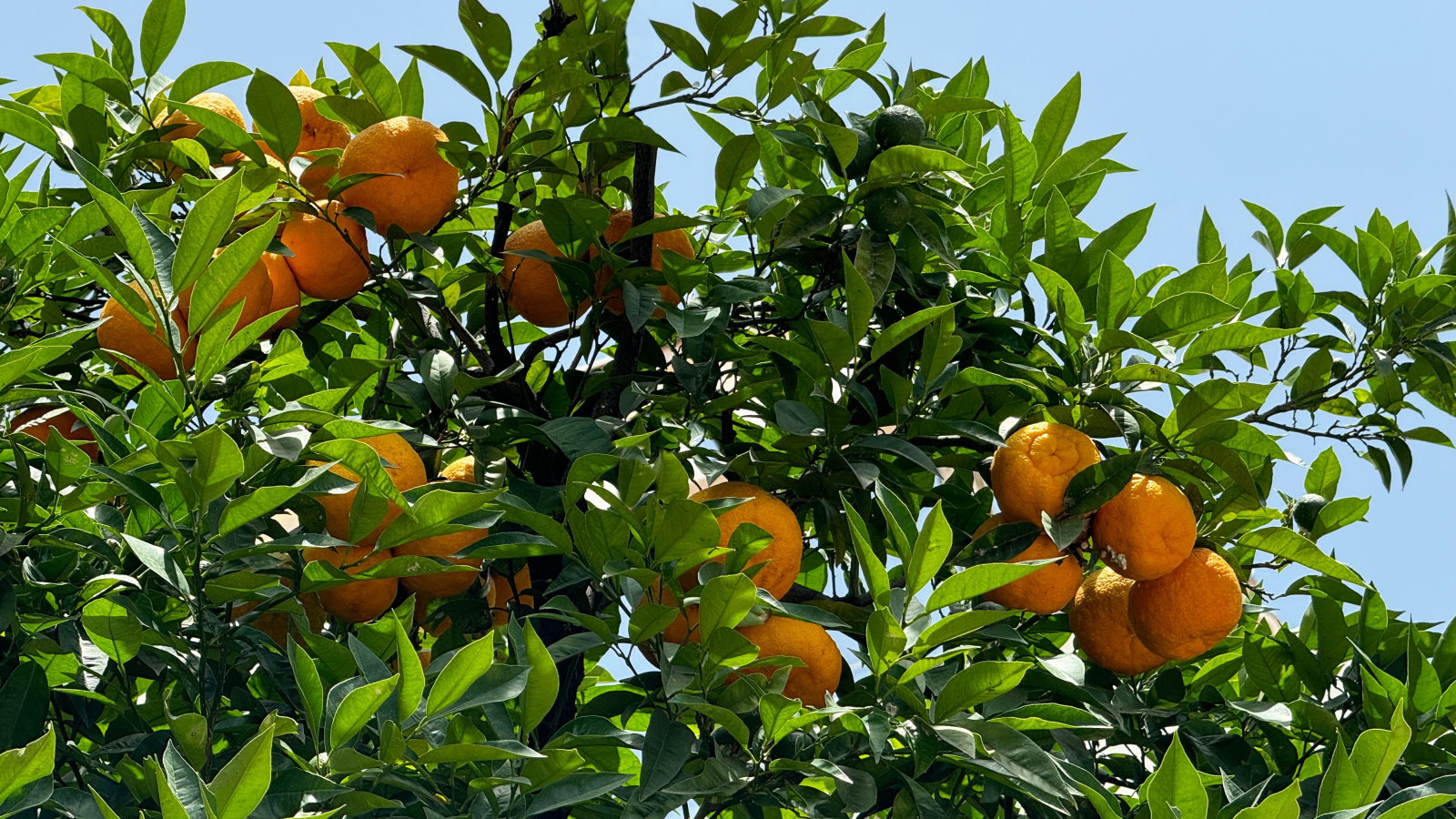Is your jade plant dropping leaves? Here's how to fix it – according to the experts
Nurse your Crassula ovata back to health with this easy guide


The fleshy green leaves are one of the main selling points of jade plants, also known as Crassula ovata, the lucky plant, or the money tree. So, if they start dropping off, seemingly without reason, a sense of disappointment is inevitable.
A native of South Africa, where it grows to around 8ft high, these succulents are generally easy to look after. With proper jade plant care, they can develop into miniature trees that look fabulous in conservatory pots. They can last for decades, and if you're lucky, mature crassula plants will sometimes offer starry white or pink flowers which adds to their appeal.
But, many indoor gardeners make an easy maintenance mistake that leads to jade plants shedding their foliage – fast. Luckily, it's simple to rectify the problem and keep these top indoor plants thriving for many more years to come.

Healthy jade plants have fleshy green leaves
Why is your jade plant dropping its leaves?

John has been a garden journalist for over 50 years and regularly answers readers' questions in Amateur Gardening magazine, including many about houseplants. He has also written four books and has delivered many talks over the years on horticulture.
The main reason for jade plants dropping their leaves is overwatering, explains John Negus. Some leaves may also turn yellow, while the stems of the plants can become mushy.
Overwatering houseplants is actually problematic for all succulents. Allowing them to sit in wet soil for periods of time quickly leads to root rot which can kill the plants. That's why it's important to ensure they're planted in pots with drainage holes, and are only watered when the top 2in or so of the soil is dry.
So, how often should you water your money tree? The answer: not that frequently. Most only need watering around once every two weeks, making them a very easy houseplant to own. Just bear in mind that they may need a touch more than this during spring and summer, when they're actively growing.
Just watch out for shriveled leaves or brown patches, which can indicate that you've held off on watering for a little too long. In fact, severely under-watering your jade plant can lead to leaf-drop, too.

Incorrect watering can cause jade plants to drop their leaves
Give your overwatered jade plant a new lease of life in 4 easy steps
John recommends repotting a jade plant that's dropping its leaves due to overwatering. It's a simple job that doesn't take long:
- Gently remove the jade plant from its container, retaining a good-sized root system.
- Using a sharp and clean pair of scissors, cut back any decayed or diseased tissue (roots included) to firm growth.
- Repot the plant in a mix of potting compost, mixed with a quarter part of sharp sand or grit to improve drainage.
- After watering in the plant, do not water again until new shoots appear. Make sure it's positioned somewhere that isn't too cold and gets plenty of light.
Are there other possible reasons for a jade plant losing its leaves?
If you're certain you're not overwatering your crassula – and you're not underwatering it either – the problem could be houseplant pests.
According to the experts at Bloomscape, mealybugs and scale insects can cause this common problem, as well as encourage the growth of sooty mold. Inspect the leaves closely, and if you spot these intruders, quarantine the plant and treat it as soon as possible.
Sign up to the Homes & Gardens newsletter
Design expertise in your inbox – from inspiring decorating ideas and beautiful celebrity homes to practical gardening advice and shopping round-ups.

Holly started writing about gardening five years ago, and she is a regular contributor to Homes & Gardens. She has also written many gardening features for Woman & Home and Real Homes, too. She has previous experience as a professional gardener, where she helped to plant and maintain private gardens. Holly has also looked after allotment plots over the years and loves to grow her own flowers and veggies from seed. In her spare time, she enjoys visiting local gardens, botanical drawing, and tending to her ever-growing collection of houseplants.
-
 How to grow grapefruit for homegrown sweet and tangy, highly nutritious harvests – a fruit tree expert shares their planting and care tips
How to grow grapefruit for homegrown sweet and tangy, highly nutritious harvests – a fruit tree expert shares their planting and care tipsFrom planting to harvesting, this is all you need to know about grapefruit trees
By Drew Swainston
-
 I struggled for 10 years to redesign my living room until I saw Joanna Gaines's 'quiet luxury masterpiece' – she's totally reinvented '50s style
I struggled for 10 years to redesign my living room until I saw Joanna Gaines's 'quiet luxury masterpiece' – she's totally reinvented '50s styleI was never a fan of '50s style until I saw this perfect room
By Jennifer Ebert